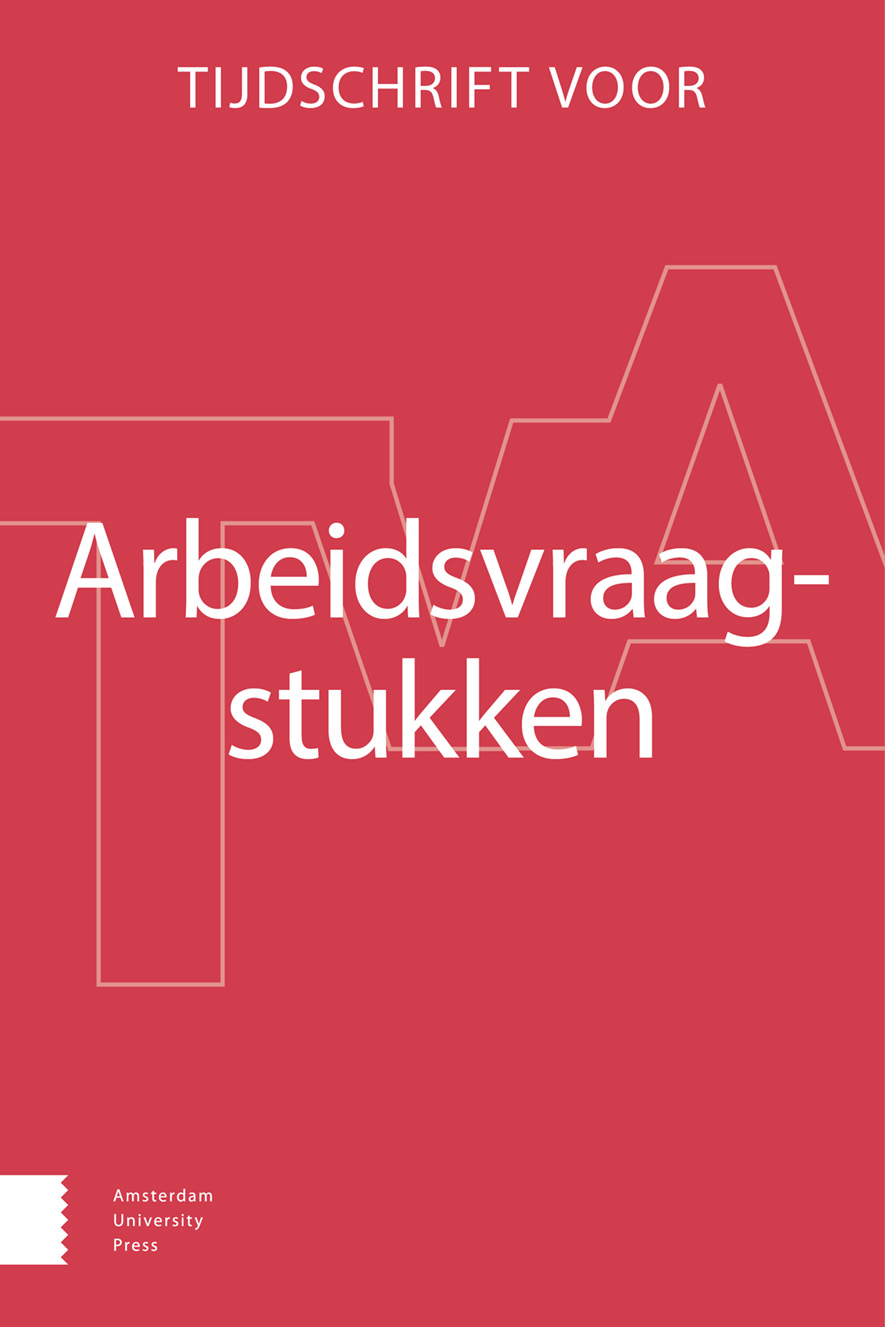-
OAWerkloosheidspreventie door Van Werk Naar Werk- en Levenlang Ontwikkelen-beleid in België, Zweden en Nederland
- Amsterdam University Press
- Source: Tijdschrift voor Arbeidsvraagstukken, Volume 39, Issue 1, Mar 2023, p. 53 - 77
-
- 01 Mar 2023
Abstract
Werkloosheidspreventie staat door de coronacrisis weer volop in de spotlights. Dit artikel bestudeert hoe België en Zweden invulling geven aan beleid gericht op Van Werk Naar Werk (VWNW) en Levenlang Ontwikkelen (LLO). Kan Nederland inspiratie opdoen uit deze twee landen? Dit artikel koppelt de typologie van werkloosheidspreventie aan het Transitioneel Inclusief HRM-arbeidsmarktmodel. Uit deze verkennende studie blijkt dat de onderzochte landen voorzieningen hebben in de primaire, secundaire en tertiaire werkloosheidsfase, maar dat de fase waarop het land het accent legt, verschilt. Zweden lijkt verder te zijn met proactief, primair werkloosheidpreventiebeleid in vergelijking met België en Nederland. Het Nederlandse VWNW-beleid is ten opzichte van België en Zweden laat van de grond gekomen. Er is geen structurele financiering voor VWNW zoals in Zweden. Nederland kent tijdelijke instrumenten en voorzieningen, maar het ontbreekt vooralsnog aan een systematische aanpak waarin VWNW vroegtijdig voor ieder individu – ongeacht het type arbeidsrelatie – beschikbaar is. In zowel Zweden als België is er ook VWNW-ondersteuning voor mensen die werkzaam zijn bij kleine organisaties. Het artikel sluit af met een aantal aandachtspunten voor de Nederlandse ambitie om een proactieve VWNW- en LLO-arbeidsmarktinfrastructuur te realiseren.


